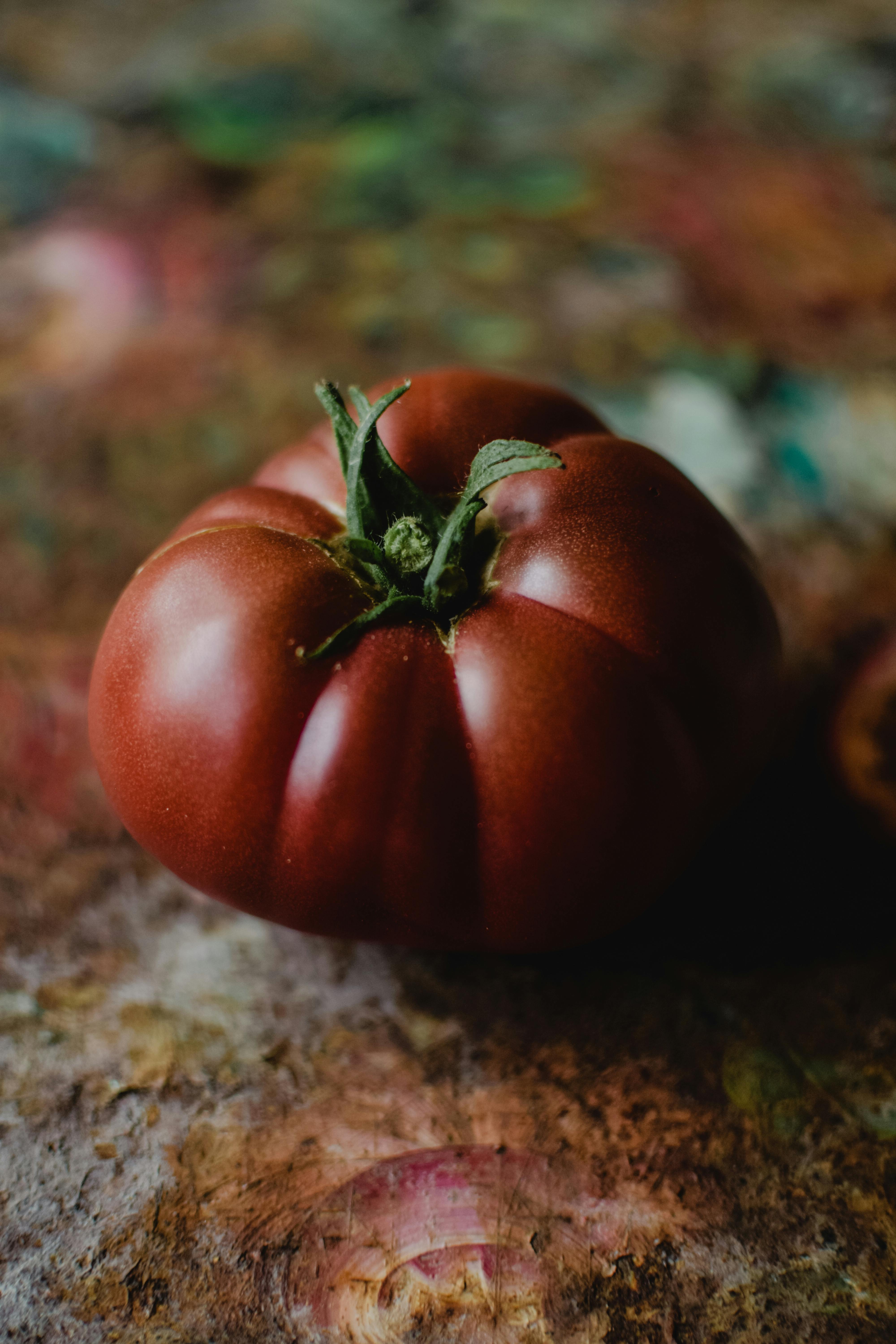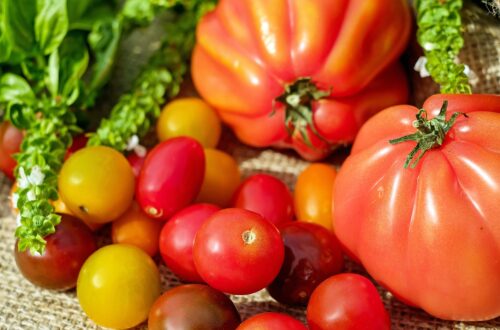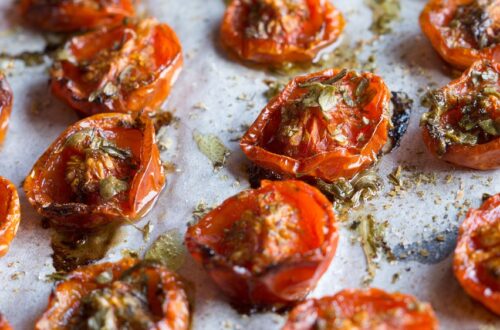
How to Grow Brandywine Tomatoes: A Comprehensive Guide
Are you dreaming of harvesting juicy, flavorful Brandywine tomatoes from your garden this season? Known for their rich taste and impressive size, Brandywine tomatoes are a favorite among home gardeners. But growing these delicious heirlooms can be a bit of a challenge if you’re not familiar with their needs. Don’t worry—this guide will walk you through everything you need to know to successfully grow Brandywine tomatoes, from selecting the right seeds to enjoying a bountiful harvest.
What Are Brandywine Tomatoes?
Brandywine tomatoes are one of the most beloved heirloom varieties, prized for their exceptional flavor and large, beefsteak-sized fruits. Originating in the 1880s, these tomatoes have become a staple in many home gardens. They come in several color variations, including red, pink, yellow, and black, each with its own unique taste profile.

Key Characteristics of Brandywine Tomatoes:
- Flavor: Rich, complex, and slightly sweet with a hint of acidity.
- Size: Large, often weighing 1 pound or more.
- Shape: Beefsteak-style with a slightly ribbed appearance.
- Growth Habit: Indeterminate, meaning they continue to grow and produce fruit throughout the season.
Now that you know what makes Brandywine tomatoes special, let’s dive into the steps to grow them successfully.
Selecting the Right Brandywine Tomato Variety
Before you start planting, it’s important to choose the right variety of Brandywine tomatoes for your garden. Here are a few popular options:
1. Pink Brandywine
- Color: Deep pink
- Flavor: Classic tomato flavor with a perfect balance of sweetness and acidity
- Growth Habit: Indeterminate
- Best For: Slicing and fresh eating
2. Red Brandywine
- Color: Bright red
- Flavor: Slightly tangy with a robust, old-fashioned tomato taste
- Growth Habit: Indeterminate
- Best For: Salads, sandwiches, and sauces

3. Yellow Brandywine
- Color: Golden yellow
- Flavor: Sweet and mild, with lower acidity
- Growth Habit: Indeterminate
- Best For: Fresh eating, especially for those who prefer a less acidic tomato
4. Black Brandywine
- Color: Deep purplish-black
- Flavor: Rich and smoky with a complex taste
- Growth Habit: Indeterminate
- Best For: Slicing and gourmet dishes
Once you’ve chosen your preferred variety, it’s time to start planning your planting.
Starting Brandywine Tomatoes from Seed
Starting Brandywine tomatoes from seed is a rewarding experience, as it allows you to nurture your plants from the very beginning. Here’s how to get started:
1. Timing Your Seed Start
Brandywine tomatoes need a long growing season, so it’s essential to start seeds indoors about 6-8 weeks before your last expected frost date. This will give the seedlings enough time to develop before transplanting them outdoors.
2. Preparing the Seed Starting Mix
Use a high-quality seed-starting mix that is light and well-draining. You can purchase a commercial mix or create your own using equal parts of peat moss, vermiculite, and perlite.
3. Planting the Seeds
- Fill seed trays or small pots with your seed-starting mix.
- Plant the seeds about ¼ inch deep and cover them lightly with soil.
- Water the soil gently to keep it moist but not soggy.
- Place the trays in a warm location, ideally between 70-75°F, to encourage germination.
4. Providing Light
Once the seeds have germinated, move the seedlings to a bright, sunny location or under grow lights. Brandywine seedlings need at least 14-16 hours of light each day to grow strong and healthy.
5. Thinning and Transplanting Seedlings
When the seedlings develop their first set of true leaves, thin them out by removing the weaker plants, leaving the strongest one in each pot. As the seedlings grow, you may need to transplant them into larger pots to give their roots more room to develop.

Preparing Your Garden for Brandywine Tomatoes
Before transplanting your Brandywine tomatoes into the garden, it’s crucial to prepare the planting area properly. Here’s what you need to do:
1. Choosing the Right Location
Brandywine tomatoes thrive in full sun, so choose a location in your garden that receives at least 6-8 hours of direct sunlight each day. The more sun, the better your plants will perform.
2. Preparing the Soil
Brandywine tomatoes prefer rich, well-draining soil with a pH between 6.0 and 6.8. Here’s how to prepare the soil:
- Test the Soil: Before planting, test the soil pH and nutrient levels. You can use a home testing kit or send a sample to a local extension service.
- Amend the Soil: If your soil is too acidic, add lime to raise the pH. If it’s too alkaline, add sulfur to lower the pH. Incorporate organic matter, such as compost or aged manure, to improve soil fertility and structure.
- Mulch: Apply a layer of mulch around the planting area to conserve moisture and suppress weeds.
Transplanting Brandywine Tomatoes
Once the danger of frost has passed and your seedlings are strong, it’s time to transplant them into the garden.
1. Harden Off the Seedlings
Before transplanting, harden off your seedlings by gradually exposing them to outdoor conditions over a period of 7-10 days. Start by placing them in a sheltered location for a few hours each day, gradually increasing their exposure to sunlight and wind.
2. Planting the Seedlings
- Dig the Holes: Dig holes that are deep enough to cover the root ball and part of the stem. Brandywine tomatoes benefit from being planted deeper, as this allows more roots to form along the buried stem.
- Add Fertilizer: Mix a balanced, slow-release fertilizer into the planting hole to give your seedlings a nutrient boost.
- Water In: After planting, water the seedlings thoroughly to help them settle into their new environment.

Caring for Brandywine Tomato Plants
Proper care is essential to ensure your Brandywine tomato plants grow strong and produce abundant fruit. Here’s how to care for them throughout the growing season:
1. Watering
Brandywine tomatoes need consistent moisture to thrive, but they don’t like to sit in soggy soil. Water deeply and regularly, aiming for about 1-2 inches of water per week. Water the plants at the base, avoiding the foliage to reduce the risk of disease.
2. Fertilizing
Feed your Brandywine tomatoes with a balanced fertilizer throughout the growing season. Start with a high-phosphorus fertilizer to encourage root development, then switch to a balanced or higher-potassium formula as the plants begin to flower and fruit.
3. Pruning
Pruning is crucial for managing the size and health of your Brandywine tomato plants. Remove any suckers that form in the leaf axils to direct the plant’s energy toward fruit production. Also, remove any yellowing or diseased leaves to improve air circulation and reduce the risk of disease.
4. Staking and Supporting
Brandywine tomatoes are indeterminate, meaning they can grow quite tall and sprawling. Provide sturdy support by staking the plants or using cages or trellises. This will help keep the fruit off the ground, reduce the risk of disease, and make harvesting easier.
5. Mulching
Apply a thick layer of organic mulch around your tomato plants to conserve moisture, suppress weeds, and regulate soil temperature. Mulch also helps prevent soil from splashing onto the leaves, which can reduce the risk of soil-borne diseases.
Managing Pests and Diseases
Brandywine tomatoes can be susceptible to various pests and diseases, so it’s important to stay vigilant and take preventive measures.
1. Common Pests
- Aphids: These small, sap-sucking insects can weaken your plants and transmit diseases. Control them with insecticidal soap or by introducing beneficial insects like ladybugs.
- Tomato Hornworms: These large, green caterpillars can quickly defoliate your plants. Handpick them off the plants or use organic pesticides like Bacillus thuringiensis (Bt).
- Whiteflies: These tiny, white insects can cause yellowing leaves and reduce plant vigor. Control them with insecticidal soap or neem oil.
2. Common Diseases
- Early Blight: This fungal disease causes dark spots on leaves and stems, eventually leading to plant decline. Prevent early blight by practicing crop rotation, using disease-resistant varieties, and applying fungicides if necessary.
- Late Blight: Late blight is a devastating disease that causes blackened leaves and fruit. Prevent it by spacing plants properly, avoiding overhead watering, and removing infected plants immediately.
- Fusarium Wilt: This soil-borne fungus causes yellowing and wilting of the plant. Prevent Fusarium wilt by using resistant varieties and practicing crop rotation.
Harvesting Brandywine Tomatoes
The moment you’ve been waiting for—harvesting your Brandywine tomatoes! Knowing when and how to harvest is key to enjoying the best flavor and texture.
1. When to Harvest
Brandywine tomatoes are ready to harvest when they have reached their full color (pink, red, yellow, or black, depending on the variety) and are slightly soft to the touch. The fruit should easily detach from the vine with a gentle twist.
2. Harvesting Tips
- Use Sharp Tools: Use sharp pruning shears or a knife to cut the fruit from the vine, especially if it doesn’t easily twist off.
- Handle Gently: Brandywine tomatoes are large and delicate, so handle them gently to avoid bruising or splitting.
- Harvest Regularly: Check your plants daily during peak season and harvest ripe tomatoes regularly to encourage continued production.
Storing and Enjoying Your Harvest
Once you’ve harvested your Brandywine tomatoes, it’s time to enjoy them! Here’s how to store and use your bounty:
1. Storing Fresh Tomatoes
- Room Temperature: Store ripe tomatoes at room temperature, out of direct sunlight, for the best flavor. They can last up to a week this way.
- Refrigeration: If you need to store them longer, you can refrigerate them, but be aware that this can affect their flavor and texture. Let refrigerated tomatoes come to room temperature before eating to improve their taste.
2. Using Your Brandywine Tomatoes
Brandywine tomatoes are incredibly versatile and can be used in various ways:
- Slicing: Enjoy thick slices of Brandywine tomatoes on sandwiches, burgers, or as a simple side dish with a sprinkle of salt.
- Salads: Add diced Brandywine tomatoes to salads for a burst of flavor and juiciness.
- Sauces: Use your Brandywine tomatoes to make rich, flavorful sauces for pasta, pizza, or other dishes.
- Preserving: If you have a bumper crop, consider canning or freezing your tomatoes to enjoy them year-round.
Growing Brandywine tomatoes is a rewarding experience that brings the joy of harvesting delicious, homegrown tomatoes with unparalleled flavor. While they may require a bit more care and attention than other varieties, the effort is well worth it when you bite into that first juicy, sun-ripened fruit.
By following the steps outlined in this guide—from selecting the right variety and starting seeds to caring for your plants and harvesting—you’ll be well on your way to a successful Brandywine tomato harvest.



